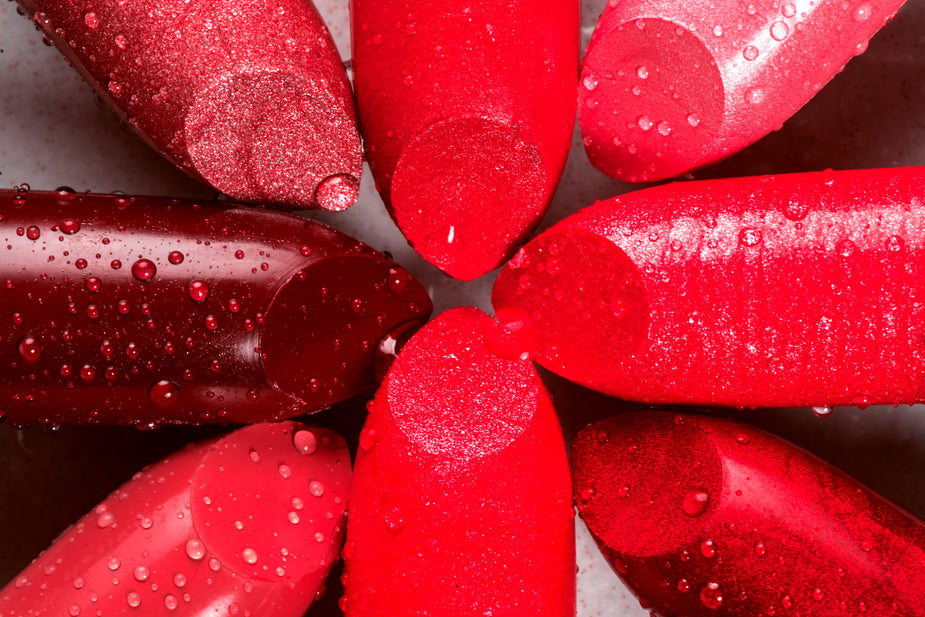
What's The Difference Between An $8 Vitamin C Serum And A $300 Version?
There are so many Vitamin C products on the market that it is very hard to determine which one is good for you. Also, it is very hard to understand the difference between various products.
I came across this article in HuffPost that may shed some light on all the above!
Dermatologists on the SKINTOK (skincare on Tik Tok) regularly talk about the benefits of vitamin C, recommending users incorporate it into their morning routines. But the price points for vitamin C serums are wildly different — why is one serum $300 while the others can be found for just under $8?
Is this difference nothing more than fancy marketing? Or does a higher-cost serum mean a better product?
First, let's start with this:
What are the benefits of vitamin C in skin care?
With an ever-increasing number of influencers promoting products that promise a new wonder ingredient, it’s easy to become jaded and wonder, “Do I even need this ingredient?”
But according to dermatologists, consumers shouldn’t sleep on vitamin C.
“Vitamin C is a topical antioxidant,” said Casey, an Ohio-based dermatologist. “It has anti-inflammatory effects in the skin; helps the skin shed dull, dry skin cells and appear brighter by increasing epidermal turnover; promotes collagen synthesis, allowing the skin to become stronger and more supple; and works in tandem with sunscreen to protect skin cells from oxidative stress.”
With the plethora of benefits vitamin C provides to the skin ― including anti-aging, brightening and collagen production ― it’s no wonder this ingredient is a darling among many dermatologists.
“Think of vitamin C as an important step in outfitting your skin to face the day ahead,” Casey said. “Topical vitamin C prepares the skin to cope with all of the pollution, inflammation, UV damage that it encounters throughout the day, and offers that extra layer of protection from environmental irritants.”
Why are some vitamin C serums so much more expensive than others?
As with any product, there’s a wide variety of factors that can affect the different price points between two vitamin C serums.
Concentrations And Quality Control
“The quality and concentration of vitamin C used in the formulation can significantly impact the price,” said Hsu, an Illinois-based dermatologist.
As the concentration of vitamin C in a serum goes up, so does the price. And while more is not necessarily better when it comes to this ingredient, consumers should make sure their serum contains enough vitamin C to be effective.
“Consumers should look for vitamin C concentrations between 10-20%,” Casey advised. “Concentrations beyond 20% really don’t offer any significant additional benefit and can be more irritating to the skin. Individuals with dry or sensitive skin should start with a lower concentration of around 10%.”
But for all of this ingredient’s benefits, there is one major downside. In its pure form ― ascorbic acid ― it’s notorious for expiring quickly. However, there are several vitamin C derivatives that prove to be more stable than pure ascorbic acid. These products can last longer on your shelf, but the trade-off is that these derivatives carry a higher price tag.
“Pure ascorbic acid is not stable unless in a liposome form,” King explained. ”Tetrahexyldecyl ascorbate and 3-o-ethyl-ascorbic acid are types of vitamin C that are more stable but also more expensive.”
In the long run, it may also benefit consumers to pay a little more for a serum from a company that prioritizes quality control.
“The manufacturing process and production standards can also influence the cost,” Hsu said. “Brands that prioritize rigorous quality control measures, advanced formulation techniques and use premium packaging materials may command a higher price to cover these expenses.”
Additional Ingredients And Patents
“Vitamin C becomes unstable when dissolved in water,” Casey said. “So combining vitamin C with complementary ingredients such as vitamin E, hyaluronic acid, ferulic acid and glutathione help stabilize the vitamin C, thereby maintaining its potency and efficacy.”
While these complementary ingredients can allow the product to last longer, they can also make it more expensive.
HOWEVER......Packaging And Marketing
Sometimes it is merely the cost of packaging and marketing that drive up the price of a particular serum.
“It is worth noting that certain retail brands may apply a higher markup to their products solely based on their brand name, irrespective of the actual formulation or ingredients,” Hsu said. “In some cases of retail skin care, some notable brands with a strong presence in the skin care market often invest in extensive marketing and prime product placements in big box stores, in which then they include that expense in the pricing markup.”
However, the packaging for vitamin C serums isn’t always just for show. The packaging can play an important role in the efficacy and shelf-life of the product.
“Although the branding and the box in which your bottle of vitamin C arrives have no impact on the efficacy of your vitamin C serum, the bottle or tube that holds the vitamin C does,” Casey said. “Vitamin C can oxidize more rapidly when exposed to air and light, so an airtight container that is opaque or composed of dark glass is best.”
This is also why it’s important for consumers to store vitamin C serums in a dark, cool place with the top securely closed. “Vitamin C serums that are stored in the dark undergo oxidative degradation at a much slower rate compared to serums that are stored in light,” Casey said.
Is it better to pay more money for a higher-priced serum?
Considering that more expensive ingredients, packaging and formulations are generally used to create serums with extended shelf lives, is it better to pay for a more expensive vitamin C serum?
“It’s not better to invest in a more expensive serum solely based on pricing,” Hsu said. “It is highly recommended to opt for a traditional medical-grade vitamin C product, as medical-grade skin care formulations of vitamin C have extensive scientific data and clinical studies supporting their efficacy.” Medical-grade skin care products are only dispensed within dermatologists’ or medical aestheticians’ offices, Hsu said.
Rather than relying solely on the price of the product, user ratings or influencer recommendations, it’s always best for consumers to look at the cold data to get the biggest bang for their buck.
“As dermatologists, we prefer to see clinical studies that objectively evaluate the effectiveness of a vitamin C serum. Clinical evidence is the best way to compare various serums on the market,” Casey said.
However, not all data and studies are created the same. Hsu recommends that consumers consider several factors when evaluating these studies.
“Factors such as study size, measurement methods, and whether the data has undergone peer review all impact the credibility of the information,” he said. “Therefore, a thorough analysis is necessary to ensure the validity and accuracy of the data before drawing conclusions about the product’s efficacy.”
How do I know if my vitamin C serum is working?
Everyone who loves skin care is familiar with the struggle of reading the clinical studies that support a product’s efficacy, taking the plunge and buying the skin care holy grail that everyone raves about online... only to find it doesn’t work for their skin.
“There is no ‘one-size-fits-all’ when it comes to vitamin C serums,” Casey said. “Just because a certain formulation worked for your friend or sister doesn’t mean that it’s the best product for you.”
So how can consumers make sure their serum is the right choice?
Start With Proper Use
“I always advise my patients to apply vitamin C serum as part of their morning skin care regimen due to the antioxidant benefits and the synergistic UV-protection vitamin C adds when layered under your sunscreen,” Casey said.
To receive the full benefits of vitamin C, consumers should also make sure they are applying their skin care products in the right order.
“Vitamin C is an active ingredient, so you want to apply this to dry skin before any moisturizers or oils which can act as a barrier to the penetration of the active ingredients,” Casey advised.
It is also important to avoid applying vitamin C with other active ingredients such as retinol, AHAs and BHAs. And when it comes to those with sensitive skin, it’s best to go low and slow with vitamin C.
“If a vitamin C serum is causing redness, irritation or inflammation, the timing of application should be adjusted accordingly by [decreasing] the frequency of application to once or twice a week,” Casey said.
Consistency, Consistency, Consistency
And as with all good things, patience is rewarded when it comes to vitamin C. Don’t expect any overnight changes.
“Vitamin C’s job is to boost collagen synthesis which your skin should feel firmer after 28 days,” King said. “It also brightens skin, and you should begin to see a difference within 28 days.”
Taking before and after pictures is another helpful way for consumers to get proof of whether a particular serum is a winner or a dud for their skin.
“I tell patients to take a photo before treatment and then compare a photo, with consistent angles and lighting, three months later,” Casey said.
And when in doubt, it’s always a good idea to consult a professional.
“Consulting with a dermatologist or medical skin care professional can provide further guidance and monitoring on changes in skin,” Hsu said.
Odor And Color
As vitamin C is well known for its instability, it’s important to keep an eye — and a nose — out for any changes in the serum’s smell from the time it was opened.
Some customers may notice a “burning rubber” or a “hot dog” smell coming from their vitamin C serums. Does a “burning rubber” smell from a vitamin C serum mean that it’s working? Or does it mean it has expired?
“Vitamin C in its pure state does not have a detectable smell, but the addition of a stabilizing agent, such as ferulic acid, can render a burnt smell,” Casey said. “Given that vitamin C is very unstable on its own, the benefit of adding a stabilizing agent, such as ferulic acid, enhances the efficacy of the vitamin C active ingredient.”
If the serum uses ferulic acid, this specific “burning rubber” smell can mean that it’s “working” in the sense that it is preventing the vitamin C from oxidizing. However, if a vitamin C product has a noticeably bad smell ― especially if the product didn’t smell that way when it was first opened — it may be time to throw it out.
“Any noticeable odor should be an indication that the vitamin C product has expired or degraded,” Hsu said.
In conclusion:
If you have sensitive or dry skin, if you have any allergies and many products leave your skin irritated, do not use a high concentration of Vitamin C. I always suggest to look for concentration between 5-10% max if you want your skin to feel good, hydrated, appear brighter and yet not to feel and be red and irritated.
As you have learned from this article, vitamin C can be quite unstable so we, at EpiLynx, always combine our Vitamin C with Hyaluronic Acid and Ferulic acid to help stabilize the vitamin C, thereby maintaining its potency and efficacy.
Also, in regards to packaging, Vitamin C can oxidize more rapidly when exposed to air and light, so an airtight container that is opaque or composed of dark glass is best, which is the only one that EpiLynx uses.
And... as a final conclusion: NO, it is NOT better to invest in a more expensive serum solely based on pricing, but it is highly recommended to read the ingredients, make sure Vitamin C is a glass and airtight dark packaging and buy it from a brand that is transparent about how they make it and the ingredients the use.




Leave a comment
This site is protected by hCaptcha and the hCaptcha Privacy Policy and Terms of Service apply.